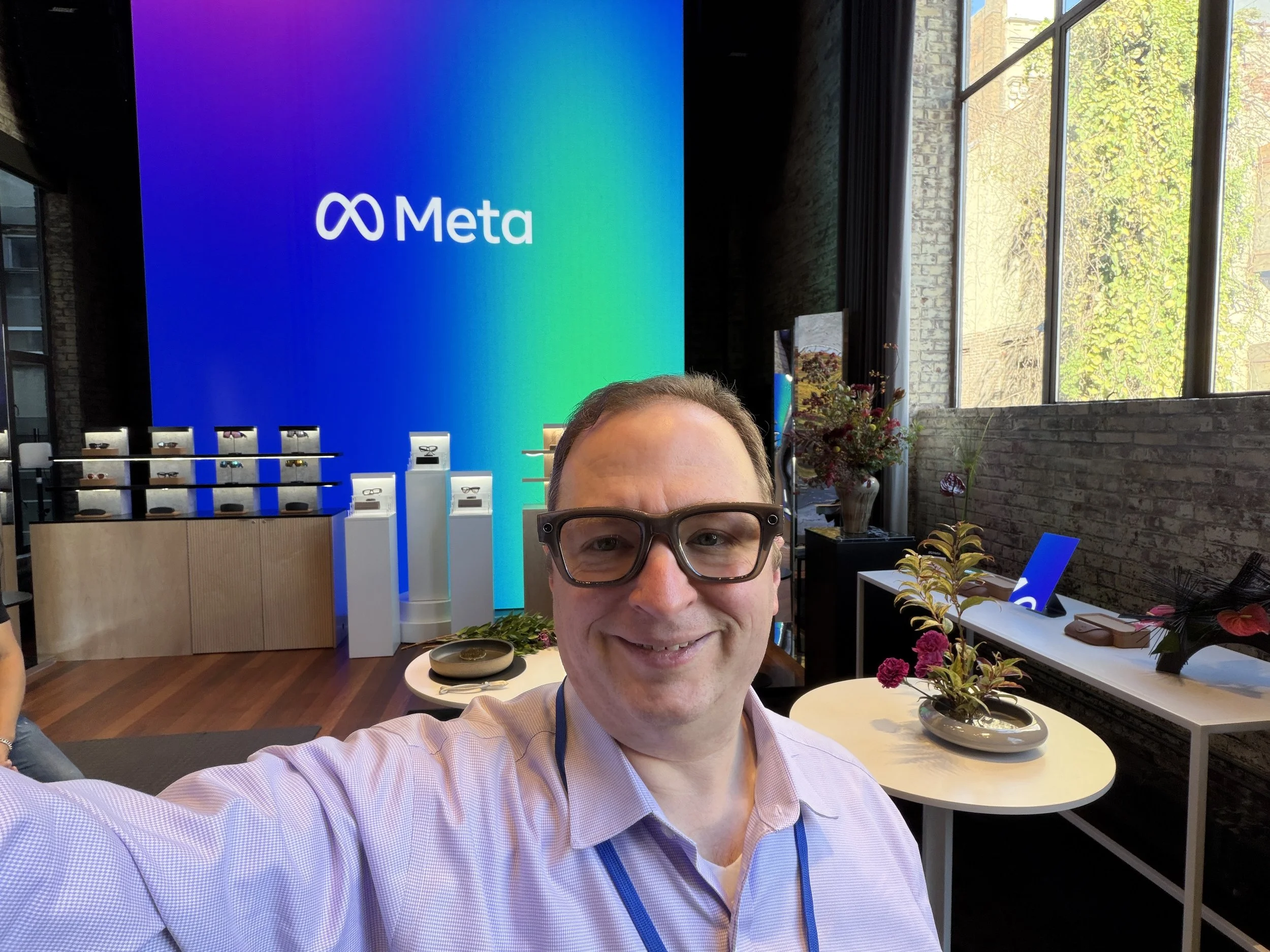Eyes On with Meta's New Smart Glasses
I spent a morning this week with Meta getting full demos of all its latest smart glasses and came away impressed.
The second-gen Ray-Ban Meta Smart Glasses are fully mainstream products: they look and act like sunglasses (or regular glasses), can be purchased through regular or optical retail outlets, and offer enough camera, AI, and audio features to be worth the delta over non-smart glasses. Meta focused my demos on live translation using your phone as the display; the experience wasn’t really better than any other live translation services that use phones or earbuds and there were still some obvious errors, but improvements in Meta’s Llama AI models have made it a viable way to carry a conversation. I should have a review unit in shortly for full tests of the newly extended battery life and higher resolution cameras.
The new Oakley Vanguard Smart Glasses are styled for sports and were far more comfortable than I expected. They weigh more than the Ray-Ban models but, perhaps due to the wraparound design and compression at the back of the temples, it feels lighter than it is. I didn’t really need them to play pickleball with journalist and friend Andrea Smith (the main demo we tried together) but if I owned a boat or raced bicycles I think I would be obligated to purchase a pair.
Meta has not made any changes to its Quest 3 VR headset, but it was showing off new content, including the latest Avatar movie trailer in 3D and the ability to attend K-pop concerts in VR. The experience is not as high resolution or immersive as similar content in an Apple Vision Pro — Blackpink looked more like avatars in their concert than Apple’s stunning Metallica VR documentary, but then the Quest costs 1/7th as much. I also got a preview of a new Star Wars podracing game that works in mixed reality; after a full VR cutscene, the race moves to a large tabletop-style presentation in your room. Unfortunately, despite being anchored in the real world and looking a lot like action figures flying Star Wars toys, the racing segments were a bit choppy and gave me mild motion sickness.
The Meta Ray-Ban Display are a classic early adopter tech product done right: Meta nails the user interface and initial use cases (notifications, mapping, live captions and translation, camera, and visual AI). I was particularly impressed with the gesture-based user interface, which incorporates a handful of consistent taps and swipes. I was able to understand and navigate the system almost immediately and never felt lost. The neural band fits comfortably, and it correctly interpreted my gestures so well that when I ran into problems, it was easy to determine that I was swiping or scrolling in the wrong direction (directions can be reversed in Settings for just this reason). Meta’s choice of microdisplay has advantages and disadvantages. Other people can’t see when you have the display on, but they may notice that you are distracted. The size, full color, and reasonably high brightness and resolution of the display make it useful for reading text, navigating maps, or even watching short vertical video clips. However, the fact that it’s just appearing to your right eye can make it seem somewhat ghostly; this does not replace a pair of XREAL One’s for viewing long-form content. The Meta Ray-Ban Display also can’t map and anchor virtual items to the real world; this is more of a smartwatch for your right eye. I won’t know if there is any eyestrain involved until I get a chance to live with them for a much longer period of time.
Smart glasses are a more involved and personal sale than many other tech products. I typically wear prescription progressive glasses. Lenscrafters was able to upgrade my first-generation Ray-Ban Meta Smart glasses with prescription progressive Transitions lenses, and I should be able to reuse those lenses on the second gen model. However, the new Meta Ray-Ban Display only supports single-vision prescription lenses, so for the day's demos I wore omnifocal contact lenses. Those are less than ideal: my distance vision is blurry with them in and I don’t like the experience or cost of wearing contact lenses. I didn't have any trouble focusing on the text and graphics inside the non-prescription Meta Ray-Ban Display demo unit while wearing contacts, but this is another bit of friction for longer term use.
There's already enough utility in the Meta Ray-Ban Display 1.0 for early adopters to get excited about, and that can serve as a foundation for mainstream success. Over time I expect Qualcomm will keep improving the silicon that powers the glasses, which will extend battery life and eventually allow the form factor to shrink. If optics improve, more prescription options will become available. Meta is already starting up a developer program which could uncover uses that feel essential, not just cool for tech lovers.
Meta still needs time to iron out the supply chain and work with Essilor Luxottica (and Best Buy) on how to sell them in volume; right now there's a wait just to be able to reserve a demo of the Meta Ray-Ban Display before placing an order for a spot in the queue for eventual fulfilment. As I noted in my report on the launch, that's a serious problem, but the good news for Meta is that its largest rivals won't have competitive products available for a while.
For Techsponential clients, a report is a springboard to personalized discussions and strategic advice. To discuss the implications of this report on your business, product, or investment strategies, contact Techsponential at avi@techsponential.com.









